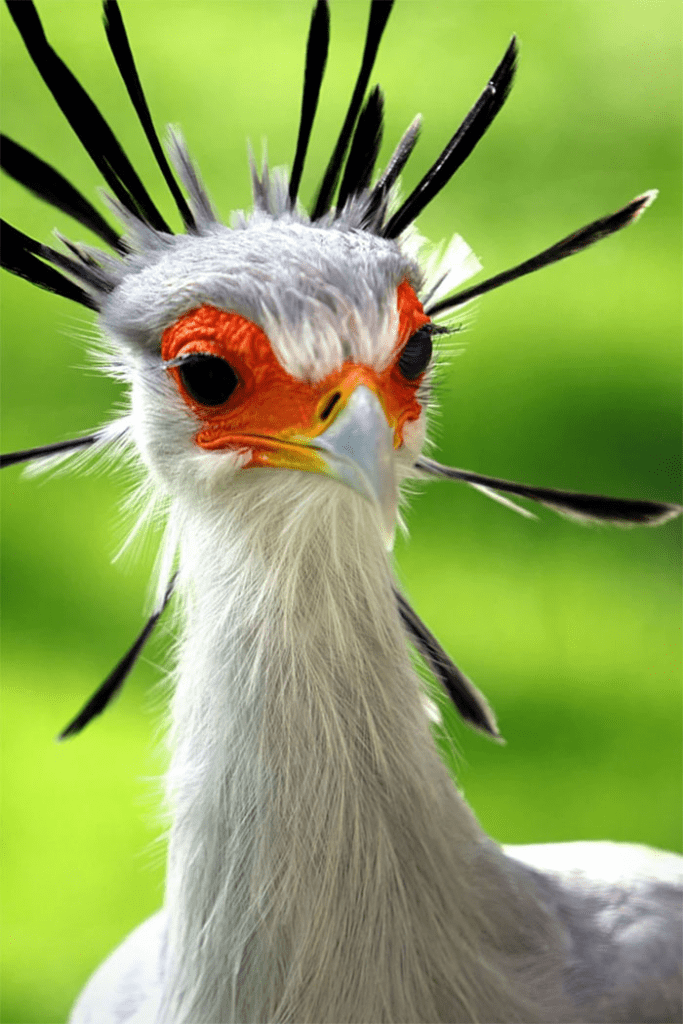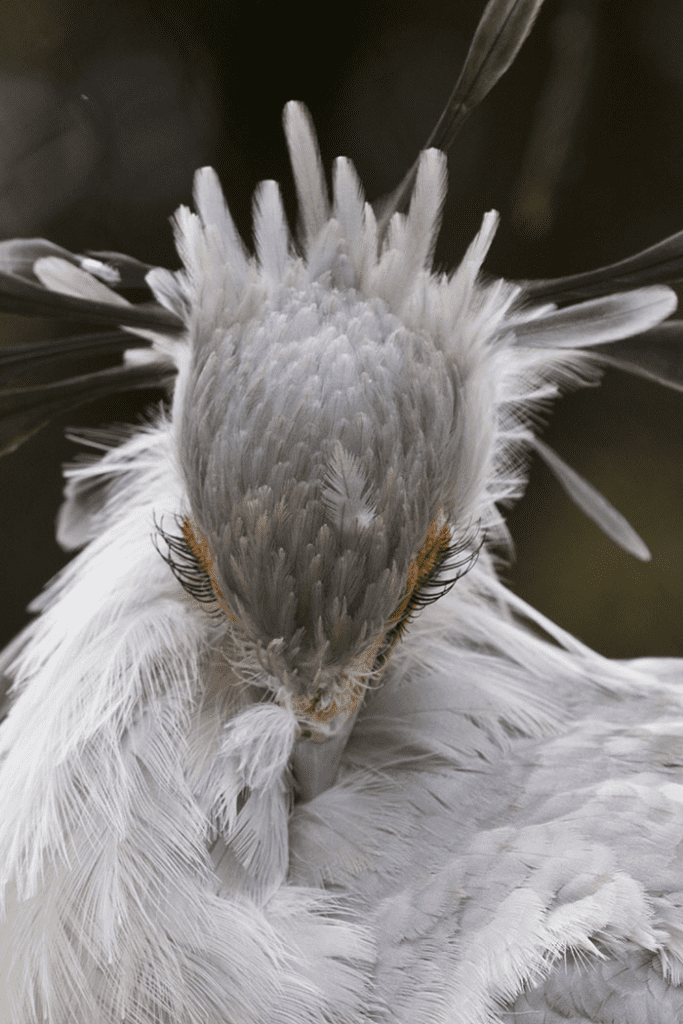Sagittarius Serpentarius is a huge African bird that is related to hawks and eagles. It was given its name because of the quill-like crests on the back of its head, which mimic 18th-century clerks with pens tucked into their wigs. Another distinguishing trait of this predatory bird. Eyelashes. Makeup artists would kill for long, prominent eyelashes like this.
#1

#2

Brian Connolly has been photographing nature for ten years. Despite his expertise, the secretary bird has managed to impress him. “From what I’ve observed,” he told Bored Panda, “the secretary bird is genuinely unusual.” “These unusual birds pound on snakes on the ground with their dinosaur-like legs and talons.”
#3

#4

That is entirely correct. Secretary birds are diurnal carnivorous raptors that eat on a range of food, including snakes, and their capacity to kill snakes in the African grasslands has been extensively documented. The secretary bird, unlike other birds of prey, is mostly terrestrial, which means it hunts its prey on foot. These magnificent birds may fly up to 18 miles (30 kilometers) every day in search of snakes, insects, and other creatures.
#5

#6

Secretary birds will eat lizards, amphibians, rodents, and bird eggs in addition to snakes such as Adders and even Cobras. Small animals are often eaten intact, whilst bigger prey is stomped to death before consumption. To flush prey from concealment, the secretary bird stamps on the ground with its large, stout-toed feet.
#7

#8

“The obstacles of capturing secretary birds are comparable to those faced by any wildlife photographer,” stated Connolly. “They move swiftly, and it’s always difficult to keep them crisp and in focus.” The secretary bird resembles a friendly stork rather than a predatory bird. These tall birds are approximately 4.5 feet (1.35 m) tall, weigh 7.3 pounds (3.3 kg), and have a wingspan of more than 6.5 feet (2 m). The secretary bird has a tiny head with a hooked beak. Its plumage is often a light-bluish grey, with a crimson face. They have black flight feathers, as well as black feathers on their thighs and the back of their heads. Their legs are large and powerful, and as previously said, they are utilized to hunt prey. They lack gripping toes, like do other birds of prey. Their toes, on the other hand, are broad and blunt, with small curled talons on the tips.
#9

#10

These magnificent animals like broad grasslands, steppe, and tree-dotted savannas. They like regions with short grass so that they can hunt more easily. Secretary birds create huge nests in Acacia or thorn trees out of long, flat twigs and grass that may be 8 feet wide and 1 foot deep. Their nests are known to expand in size year after year. After hunting, they return to their nests soon before dark to roost for the night. These birds avoid dense shrubbery and forests because they restrict their movement.
#11

#12

Courtship involves chasing each other with their wings spread up and backward, similar to how they act when chasing ground prey. Mating occurs on the ground or in their large nests high up in the Acacia trees. Over the course of two to three days, the female lays two to three oval eggs. The rough-textured eggs are incubated by the female for another 45 to 50 days.
#13

#14

When the young are 60 days old, they begin flapping their wings and acquire wing feathers at 80 days. Although they still spend most of their time in the nest, they are already going on hunting trips with their parents.
#15

#16

In Africa, the secretary bird is valued for its beautiful beauty and ability to cope with pests and snakes. In reality, it has appeared on the Sudanese flag and the South African coat of arms.
#17

#18

#19








